 Leading Blog | Posts by Month |
 Leading Blog | Posts by Month |
02.28.23

LeadershipNow 140: February 2023 Compilation
See more on
Posted by Michael McKinney at 06:42 AM
02.27.23

Upshift: How to Turn Pressure into Performance and Crisis into Creativity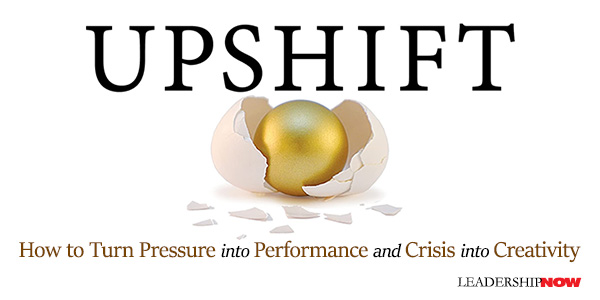
PROBLEMS come our way. They always do. And too little of the associated stress is not good. We become disengaged, demotivated, and unfulfilled. But with too much stress we become overloaded, and we just feel like shutting down. But in between is the Challenge Zone. International crisis management specialist Ben Ramalingam writes in Upshift: Turning Pressure into Performance and Crisis into Creativity, that between the two extremes is the “sweet spot” where we experience a healthy level of stress. We start to move toward this sweet spot when we switch from perceiving a stressful situation as a challenge rather than a threat. This is where we start to move from the left- or right-hand below-par-performance sides into the peak-performance zone. We click into being at the top of our game: into Upshifting.
Necessity is necessarily the mother of invention. “Evidence and experience suggests that most of the time, the pressure of necessity actually leads us to convention, not invention. When we are under pressure, most of us gravitate towards the safe, the tied and tested.” We actually need three ingredients to capitalize on necessity and turn it into peak performance: Mentality, Originality, and Purpose. When all three are present, we have Upshift. The Upshifting Mentality The upshifting mentality is the switching process. We have all formed over time how we deal with stress. “A threat is a stress that we feel we can not handle, because we do not feel we have the resources to meet the demands of the situation.” How we see a circumstance in our mind determines how we react to it. We have mindsets anchored in beliefs that cause us to see stress as enhancing or debilitating. It is a mental game. It is something that we deliberately learn, practice, and improve on. Exposure to adversity in moderation can develop the mindset we need to cope with future pressure situations and give us an enhanced stress inoculation. We develop this naturally from early on through play-fighting. Original Thinking Under Pressure What we’re looking for here is divergent thinking—the ability to explore multiple possible solutions in order to generate creative ideas. This is opposed to convergent thinking, which is the process of figuring out the most effective answer to a problem. Divergent thinking is more likely “when we appraise a situation as a challenge. Being in a challenge state means we are more willing to explore possibilities.” Purpose A purpose in our lives creates meaning in our circumstances. What we all need is not a tensionless state but, as Viktor Frankl stated, “the call of a potential meaning waiting to be fulfilled by us.” Harvard professor Teresa Amabile “found that in situations where pressure can’t be avoided, you can get people to be creative by instilling a meaningful purpose, where they have a sense that there is an important, urgent need for the work they do. As Amabile puts it, ‘Often we have no choice about being under the gun. But if we want to be creative, we have to learn to dodge the bullets.’” Upshifting is not a given. It is a repeatable set of behaviors that, over time, become engrained habits, ways of thinking and relating, and, ultimately, a way of being. 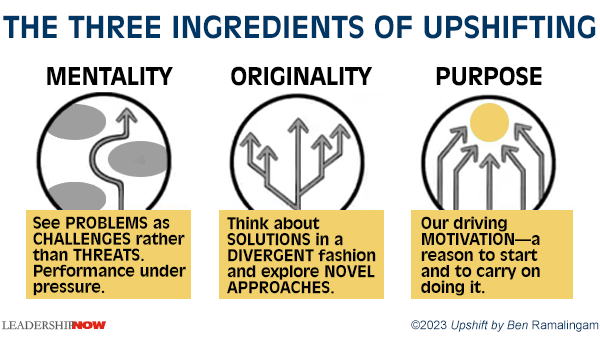
Six Upshift Archetypes As Ramalingam points out, “Upshifting builds on our individual and distinctive problem-solving skills and styles.” He has identified six Upshift archetypes, which he discusses in detail, sharing examples of individuals who share those characteristics. They are: Challengers—preferred by those of us who are skilled in constructively disrupting the status quo around us. Social activist Rosa Parks.
Which approach do you habitually turn to? 
Posted by Michael McKinney at 08:06 AM
02.24.23

Intrinsic Motivation: How to Be Motivated by Doing What You Do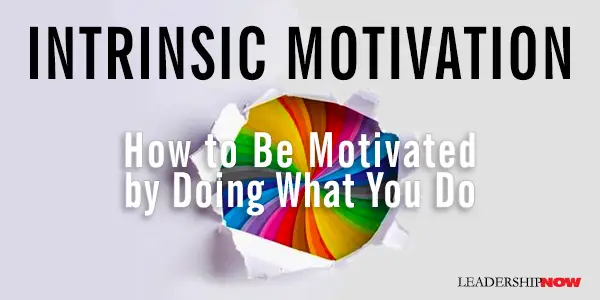
NO MATTER WHAT you are doing, you can be motivated by the work you do. Even if you hate your job, you can learn to love any activity. The key is to create excitement around the experience of doing what you do – intrinsically. It is an inside job. Performance coach Stefan Falk has written Intrinsic Motivation: Learn to Love Your Work and Succeed as Never Before to help you do just that. We can learn to love any activity by rewiring our brains to Focus on Exciting Outcomes or FEOs. The foundation for doing that is found in five success principles that have worked for Falk and others he has shared them with:
The end goal of all of these principles is to cultivate excitement which enables you to love what you do. We sabotage ourselves when we make excuses for not loving our work. The most common excuses are too much to do, too stressed, poor relationships, and unfair performance assessments. There are toxic work environments that reflect on where you work and not why you hate your work. Falk says, “unless you are in an exceptionally bad working environment, in which case you should leave, your excuses are obstacles of your own creation.” So, what’s the answer to this conundrum? The answer is in learning to master your mind. Falk offers “proven step-by-step tools and approaches that will make it easier and less energy-consuming for you to master your mind and to think and act deliberately in your professional life.” To get your head around how to make Exciting Outcome-Focused Behavior or FEOs part of your normal way of operating at work, you need to understand that your work tasks have nothing to do with whether you love them. What makes a work task or activity lovable is how you think about the result you want to achieve. The more exciting that result is to you, the more time you’ll spend thinking about how to best perform that activity. What makes this so difficult to do is that we too often think of work as work and not something we are to enjoy. And we (and our organizations) are activity focused. Organizations thrive on activity-based goals such as “Develop the process for customer complaints,” “Move our data to the cloud,” or “Execute our digital transformation.” The common denominator among almost all company goals is their lack of clear and exciting outcomes. Most professionals are evaluated and rewarded based on whether they have executed an activity and not on what they achieved by doing so. We have the power to think about our work in ways that make it lovable. Every task can be made interesting because every task has endless complexity and can be performed with endless variations. That, of course, requires that we overcome our reluctance to expend energy on deliberate thinking. For example, Falk considers the simple task of asking a colleague for information. We might ask ourselves: • What exactly do I need to know, and how do I express it?
That is certainly intentional thinking. Falk then offers chapters discussing approaches to our work arranged from easy, moderate, and demanding to implement. These include: • Set expectations every day and bring home something exciting and interesting to tell your kids
And many more. Intrinsic motivation happens when you feel challenged. You will need to constantly increase the complexity and challenge of your work. The way you perform your tasks can always be improved, even if you perform them well. To be an intrinsically motivated person, you will need to look for moments when you should be challenging yourself rather than performing on autopilot. No workplace, good or bad, will matter if you haven’t mastered your mind. That said, a good workplace will make it easier to engross yourself in your work. More importantly, you should look for an organization that is “designed to enable its people to experience a sense of autonomy.” 
Posted by Michael McKinney at 07:11 AM
02.23.23

Leading Thoughts for February 23, 2023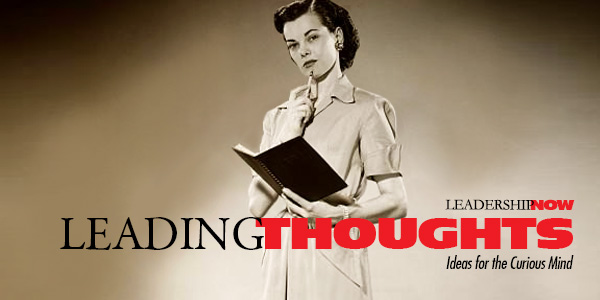
IDEAS shared have the power to expand perspectives, change thinking, and move lives. Here are two ideas for the curious mind to engage with: Matt Mayberry on avoiding slogans and no action when transforming your culture: “Culture is not just about turning values into behaviors. It’s about turning values into repeatable behaviors, into actions that become daily habits that are shared across the organization. Abraham Lincoln on the requirements for facing new challenges: “The dogmas of the quiet past, are inadequate to the stormy present. The occasion is piled high with difficulty, and we must rise -- with the occasion. As our case is new, so we must think anew, and act anew. We must disenthrall ourselves, and then we shall save our country” Source: Annual Message to Congress – Concluding Remarks, December 1, 1862 Look for these ideas every Thursday on the Leading Blog. Find more ideas on the LeadingThoughts index.
Posted by Michael McKinney at 07:29 AM
02.20.23

70 Thoughtful Quotes from 30 Presidents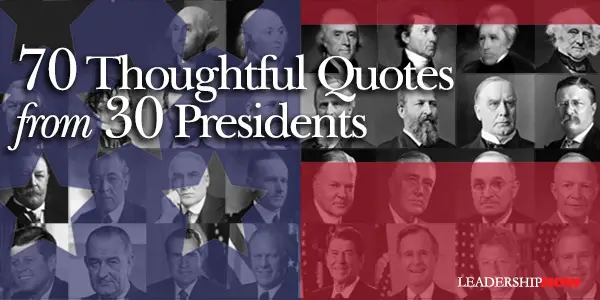
HERE are 70 quotes from 30 U.S. presidents to think about. Whether you liked their administration or not, each thought will help to broaden our perspective. George Washington, 1789-1797 “If the freedom of speech is taken away, then dumb and silent we may be led, like sheep to the slaughter.”
John Adams, 1797-1801 “I must study politics and war that my sons may have liberty to study mathematics and philosophy.”
Thomas Jefferson, 1801-1809 “In matters of style, swim with the current; in matters of principle, stand like a rock.”
James Monroe, 1817-1825 “In a representative republic, the education of our children must be of the utmost importance!”
Andrew Jackson, 1829-1837 “One man with courage makes a majority.”
Martin Van Buren, 1837-1841 “It is easier to do a job right than to explain why you didn’t.”
Millard Fillmore, 1850-1853 “May God save the country, for it is evident that the people will not.”
Franklin Pierce, 1853-1857 “If your past is limited, your future is boundless.”
Abraham Lincoln, 1861-1865 “America will never be destroyed from the outside. If we falter and lose our freedoms, it will be because we destroyed ourselves.”
Ulysses S. Grant, 1869-1877 “If we are to have another contest in the near future of our national existence, I predict that the dividing line will not be Mason and Dixon’s but between patriotism and intelligence on the one side and superstition, ambition, and ignorance on the other.”
Rutherford Hayes, 1877-1881 “Every expert was once a beginner.”
James Abram Garfield, 1881 “A brave man is a man who dares to look the Devil in the face and tell him he is a Devil.”
William McKinley, 1897-1901 “That’s all a man can hope for during his lifetime - to set an example - and when he is dead, to be an inspiration for history.” Theodore Roosevelt, 1901-1909 “I put myself in the way of things happening, and they happened.”
William Howard Taft, 1909-1913 “No tendency is quite so strong in human nature as the desire to lay down rules of conduct for other people.” Woodrow Wilson, 1913-1921 “I have always been among those who believed that the greatest freedom of speech was the greatest safety because if a man is a fool, the best thing to do is to encourage him to advertise the fact by speaking.”
Warren Harding, 1921-1923 “I am not fit for this office and should never have been here.”
Calvin Coolidge, 1923-1929 “I have found it advisable not to give too much heed to what people say when I am trying to accomplish something of consequence. Invariably they proclaim it can’t be done. I deem that the very best time to make the effort.”
Herbert Clark Hoover, 1929-1933 “It is a paradox that every dictator has climbed to power on the ladder of free speech. Immediately on attaining power, each dictator has suppressed all free speech except his own.”
Franklin Delano Roosevelt, 1933-1945 “Repetition does not transform a lie into a truth.”
Harry S. Truman, 1945-1953 “The buck stops here.”
Dwight David Eisenhower, 1953-1961 “Never let yourself be persuaded that any one Great Man, any one leader, is necessary to the salvation of America. When America consists of one leader and 158 million followers, it will no longer be America.”
John Fitzgerald Kennedy, 1961-1963 “No matter how big the lie, repeat it often enough, and the masses will regard it as the truth.”
Lyndon Baines Johnson, 1963-1969 “You know, doing what is right is easy. The problem is knowing what is right.”
Richard Milhous Nixon, 1969-1974 “Only if you have been in the deepest valley can you ever know how magnificent it is to be on the highest mountain.”
Gerald Rudolph Ford, 1974-1977 “If compassion and mercy are not compatible with politics, then something is the matter with politics.” Ronald Wilson Reagan, 1981-1989 “The greatest leader is not necessarily the one who does the greatest things. He is the one that gets the people to do the greatest things.” George Herbert Walker Bush, 1989-1993 “The American Dream means giving it your all, trying your hardest, accomplishing something. And then I’d add to that, giving something back. No definition of a successful life can do anything but include serving others.” William Jefferson Clinton, 1993-2001 “If you live long enough, you’ll make mistakes. But if you learn from them, you’ll be a better person. It’s how you handle adversity, not how it affects you. The main thing is never quit, never quit, never quit.” George Walker Bush, 2001-2009 “Leadership to me means duty, honor, country. It means character, and it means listening from time to time.”
Posted by Michael McKinney at 11:01 AM
02.17.23

Me vs. We: 3 Strategies for Negotiating in Relationships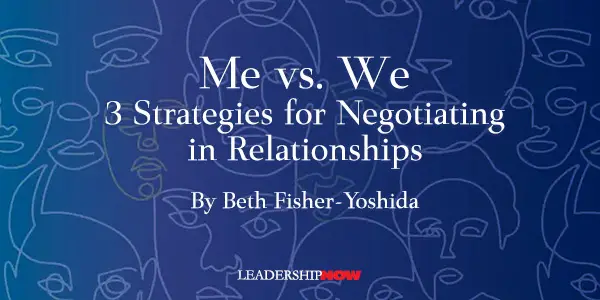
NEGOTIATIONS can take on a life of their own. That’s because you plan how you’ll negotiate in isolation, yet you negotiate within a relationship—whether that relationship is professional or personal. Consciously deciding how you’ll approach the negotiation is a crucial part of your preparation. This might sound silly or unnecessary, but clearly stating your intentions to yourself will influence how successful the negotiation will be. Depending on your tone, the negotiation’s context, and how you frame it, the interaction will either be competitive or collaborative. Is your stance competitive or collaborative? If you go into a negotiation with the intention of winning without regard for the other party, you’ll be negotiating competitively. Your communication will be limited because you don’t want to give an advantage to the other side by providing information; your actions will continuously favor your side, your flexibility in being able to shift from your positions to needs will diminish, and you won’t be building trust. All of this will be influenced by your competitive orientation. You’ll win, and the other party will lose. On the other hand, if you have the intention of winning with the other party, you’ll have a collaborative framing of the negotiation. You’ll encourage open communication, share information to strengthen the other party, work on building trust, and take actions that will bring you closer to arriving at mutually beneficial outcomes. This approach will set the foundation for a healthy, long-term negotiating relationship. Creating healthier negotiations You may be wondering: Whose responsibility is it to create these healthier and mutually beneficial negotiations? The short answer is that we all hold some responsibility, but we may not know it. For example, let’s say you’re negotiating with a senior work colleague about an upcoming deadline. You may believe you don’t have sufficient power in the relationship to do anything but accommodate your colleague’s request. But I would counter that notion; while you may not hold all the power to make the final decision, there are ways you can influence it. Regardless of your initial intentions and whether the negotiation is going the way you planned, you can still influence the next steps and the direction you’d like the negotiation to take. For instance, if your colleague demands, “I need this on my desk by week’s end,” you can still respond with a question to find out more information. You might say, “I hear what you’re saying about wanting the results by the end of the week. I’d like to know more about what’s driving the quick turnaround and how I can make the necessary adjustments to accommodate you.” This technique slows down the negotiation’s pace and keeps you feeling confident that you still have some control over the process and outcomes. If you’re feeling pressured to produce results before you can comfortably deliver them, you’ll want to know more about the urgency of the deadline. It could be that some of the results are needed before others, so you can split up the work and focus on the more immediate needs first and deliver the remainder afterward. These actions allow you to be an active participant in the negotiation and parse out the critical information from the rest. Your willingness to hear the other party, understand their needs and make adjustments make you their negotiation partner, not an adversary. Try these three negotiation strategies Here are three tips to consider when emphasizing the “we” in your negotiating partnership:
 
Posted by Michael McKinney at 07:27 AM
02.16.23

Leading Thoughts for February 16, 2023
IDEAS shared have the power to expand perspectives, change thinking, and move lives. Here are two ideas for the curious mind to engage with: Nine-time Grammy-winning producer Rick Rubin on awareness: “Awareness is not a state you force. There is little effort involved, though persistence is key. It’s something you actively allow to happen. It is a presence with, and acceptance of, what is happening in the eternal now. Source: The Creative Act: A Way of Being Professor Robert Mayerovitch on teachability: “Curiosity doesn’t negate what you know and treasure. Instead, it offers the promise of even more: more richness, more depth, and breadth, more opportunities to be amazed and troubled and challenged and stimulated and ultimately uplifted by what you find.” Source: Speech, The Challenge of Otherness, May 7, 2006 Look for these ideas every Thursday on the Leading Blog. Find more ideas on the LeadingThoughts index.
Posted by Michael McKinney at 08:46 AM
02.13.23

How Our Current Office Shock Can Lead to a Climate-Positive “Officeverse”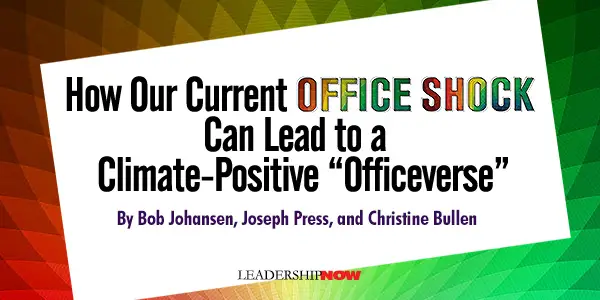
MANY OFFICES that were shuttered during the COVID-19 pandemic had inherent problems even before the crisis. Traditional offices were often unfair, uncomfortable, uncreative, and unproductive. COVID-19 forced millions of people to work and live in ways they’d never attempted before, leading to a state of “office shock.” Fixed became fluid. Unexamined assumptions about offices and office work opened into probing questions that demanded careful thought. It took a global pandemic to shake open executive minds to the possibility of better ways of doing office work. Further, many traditional offices were climate-negative, while some were climate hostile. But overall, climate impacts improved during the shake-up with the promise of much more to come. Offices and officing could be an important catalyst for positive climate choices. Buildings and their construction are among the largest contributors to global resource use. In considering the opportunity offices can play in changing the narrative for a better future, legendary architect Frank Duffy offered a stark indictment of traditional offices: The Taylorist office building has been a perfect machine for delivering environmental degradation because it’s so completely the product of supply-side thinking, which overrides user interests, ignores the public good and takes no account of collateral damage. Why do we work in offices at all? During COVID-19 shutdowns a lot of productive office work got done without offices. Hybrid work and flexibility are now normalized, but the future of work is up for grabs. Office shock will continue for many years to come. And that can be an opportunity for climate-positive officing. COVID-19, along with the internet, were catalysts for office shock, which has revealed impossible futures for offices and officing that are now possible. An emerging “officeverse” is shaping new models in an ever-changing mix of work, place, and time options for living and working. Climate-Positive Offices In the corporate real estate industry, Duffy argued that the root cause of climate abuse by offices is the office supply chain and its incentives. Facility managers should be rewarded for maintaining highly sustainable environments, not merely reducing costs. Design and construction professionals should be rewarded for making the most imaginative and efficient use of existing spaces, rather than for new building. Finance and development providers should be rewarded for sustainably managing what exists already, rather than pursuing new ventures. We can all do much to improve the regenerative capabilities of offices. Critical choices must be made to change consumption, produce with circularity, and regenerate the planet. Our current state of office shock could be a much-needed spark for the choices about our future that could rein in impending disasters. Office shock provides an opportunity to reverse the many unsuccessful attempts at doing the right thing. At the same time, the window of opportunity is closing quickly. The UN Secretary-General, António Guterres, reacted to the Intergovernmental Panel on Climate Change (IPCC) Sixth Assessment Report published on April 4, 2022, saying the report reveals “a litany of broken climate promises” by governments and businesses. He even accused many of lying when claiming to be on track to limiting future heating to 1.5°C above pre-industrial levels. In a strongly worded rebuke, Guterres said: “It is a file of shame, cataloguing the empty pledges that put us firmly on track towards an unlivable world.” While technical solutions are necessary, they are insufficient to bring about a change in behavior. To have an effect, we will need to change minds and systems. A climate-positive future will need to incorporate social, economic, political, and cultural changes to address this urgent need and provide a way to examine the span of choices from net-zero, where people and offices don’t contribute to the emission of greenhouse gases, to Regenerative, where active steps can be taken to cultivate and renew the resources of our planet. Finding the harmony of choices that will enable us to fight in this battle for survival is critical to a better future. A sustainable future requires making choices today to make a climate-positive impact. The office can be the place where organizations converge on a shared purpose of sustainability. Here are some ideas to adopt for a climate-positive officeverse:
 
Posted by Michael McKinney at 08:22 AM
02.10.23

The Ecosystem Economy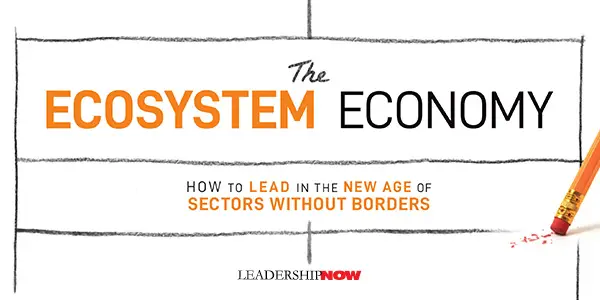
IN THE BEGINNING, as civilizations grew and became more advanced, work was organized around specialized lines of work. These sectors of work, like the mining, textile, or glassmaking industries, thrived with their own supply chains, expertise, and proprietary distribution. And this is basically how we think of business today. But that is changing. McKinsey partners Venkat Atluri and Miklós Dietz illuminate that change in The Ecosystem Economy. The borders between sectors are dissolving. Sectors like construction, real estate, automotive manufacturing, financial services, and health care have been thought of as distinct categories, each operating in its own spheres. Today we see businesses organizing “into new, more dynamic configurations, centered not on the way things have always been done, but on people’s needs.” Businesses form ecosystems by collaborating with one another—by sharing assets, information, and resources—and ultimately creating value beyond what would have been possible for each of them to achieve individually. The term business ecosystem has been used in the past generally to refer to relationships between one organization and its clients. The ecosystem economy that the authors refer to here goes much deeper than that. More like alliances between organizations that pull together the steps in a customer’s journey. Even if each step in that journey is fulfilled or managed by a different company, the ecosystem integrates them into a single platform, so that from the customer’s perspective, it’s all one experience, one journey. In other words, if an ecosystem can help consumers through the most arduous step on their journey, they will be more likely to trust the broader ecosystem with the rest of their needs. Tencent, Apple, and Google are all examples of economic ecosystems. Ecosystems are reshaping the world around us. The question is, how do we adapt and participate in this ecosystem economy? The two questions we need to be asking first are: Where will you compete now? And what should you do to evolve your value proposition? To answer these questions, the authors say, “you will need to vastly expand your scope—and shift the nature of your planning. You need to fundamentally rethink how you define your customers’ needs, your customer base, your industry, your proposition, and the competitive landscape.” The book provides examples of how to begin to work through this. As you do this, other questions begin to take shape, like, will you build the new ecosystem yourself? Will you participate in someone else’s ecosystem? Or a little of both? Then you need to transform your organization from within. You will need to rethink your approach to your organizing and operating model, talent, performance management, the underlying culture, and supporting infrastructure. They boil the lessons of their ecosystem playbook processes and recommendations down to ten principles which I’ll just list here:

Posted by Michael McKinney at 07:39 AM
02.09.23

Leading Thoughts for February 9, 2023
IDEAS shared have the power to expand perspectives, change thinking, and move lives. Here are two ideas for the curious mind to engage with: Robin Sharma on leadership roles: “Know your role. Everyone needs to behave like a leader—no matter what they do. Everyone needs to demonstrate leadership traits—regardless of their position. That means everyone needs to take responsibility for getting results that they generate. Everyone needs to do their part to shape culture. Everyone needs to be positive and inspirational. Everyone needs to keep customers happy and protect the brand. Everyone is a leader. But not everyone is the same.” Source: The Greatness Guide: Powerful Secrets for Getting to World Class Rose Patten on true collaboration: “Spirited collaboration – enabling and encouraging dissent, with the ultimate objective of arriving at a better outcome. A harmonious group of like minds becomes an echo chamber of agreement. A leader who doesn’t allow diverse opinions and ideas for improvement will perform suboptimally. Today’s leadership challenges – a more complex and diverse workplace, digitalization, far-reaching stakeholder expectations – will push the need for inclusive and dissenting (“spirited”) collaboration.” Source: Intentional Leadership: The Big 8 Capabilities Setting Leaders Apart Look for these ideas every Thursday on the Leading Blog. Find more ideas on the LeadingThoughts index.
Posted by Michael McKinney at 08:13 AM
02.06.23

How to Bounce Forward When Life Throws You a Curve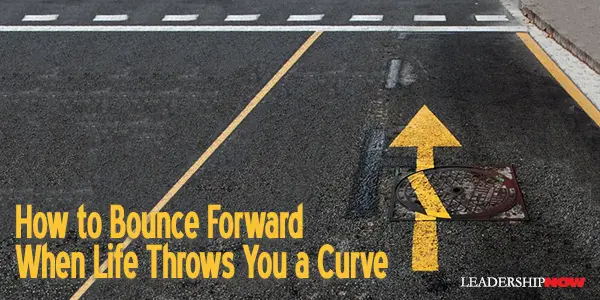
THE SCOTTISH POET Robert Burns wrote, “The best-laid schemes of mice and men often go awry,” in a poem to a mouse whose nest was disrupted by the plow. The implication is that things rarely go just the way we want. Disruptions fall all along the spectrum from “the whatever” to “the paralyzing.” From my-coffee-is-too-hot to the death of a loved one; from the game was canceled to a divorce. Some we quickly move past, and some stop us dead in our tracks. Some disruptions are predictable and some we never saw coming. But they all make us uncomfortable because something is not going the way we planned it. And it seems no matter what we do, we are frustrated by our inability to control it. The world doesn’t always bend to our wishes. Things don’t always go the way we planned them to go for absolutely no good reason. Events happen for which we have no good explanation. King Solomon also reflected on the same thought in his book Ecclesiastes. He wrote: I returned and saw under the sun that—The race is not to the swift, Nor the battle to the strong, Nor bread to the wise, Nor riches to men of understanding, Nor favor to men of skill; But time and chance happen to them all. It’s a good description of the world we live in. It’s not very logical. It’s not very hopeful. It doesn’t always make sense. Sooner or later, bad luck hits us all. It doesn’t matter who (or what) you are—man or mouse—disruption is a way of life. From the disruption of birth to the disruption of death, life is full of change. Wanting things to go our way, we fight against these disruptions. We get angry, we blame, and we get depressed, and we ask, “Why is this happening to me?” We fight against whatever is making us uncomfortable. We want it to end so we can get back to the way we were. But we can’t go back. Disruptions either change us or they leave us stuck going nowhere. If our emphasis in life is to hang on to what we have, what we are, then one day we will find ourselves running on empty, living meaningless lives. For some disruptions, it is fair to say, “Get over it,” and move on. For others, something much deeper needs to happen, more akin to healing. But whether the disruption is big or small, there is a quality that is critical to our success that connects them all. Our ability to deal effectively with any disruption is determined by how resilient we are. A good definition of resilience is our capacity to maintain our core purpose and integrity in the face of dramatically changed circumstances. Resilience is our ability to roll with the punches and deal with these disruptions in a more positive and creative way. I remember my parents telling me, from early on, to roll with the punches—don’t let situations knock you off course. It’s the idea that your circumstances don’t determine your future. Resilience is our ability to bounce forward no matter what life throws at us. And I say bounce forward because, as we all know, most disruptions leave us nothing to bounce back to. Who and what we were has been forever changed. Resilience means learning to deal with the uncertainty of life as a given. We should anticipate our plans going awry and prepare for it, but most of us are not remotely prepared to deal with real disruptions. Sidestepping a disruption in our life makes us more vulnerable to the next one. The mistaken impression that life should always be happy does not prepare us for the tragedy and danger of this world. When something goes wrong, we want someone to fix it. We lack resilience. A bubble-wrapped life is a fragile life. The most comfortable life is the most fragile and the most likely to collapse under stress. In our comfort, we don’t build the resilience we need to deal with life. So, when someone or something suddenly messes with our plans, we are hit harder by them because we lack the skills and mindset to deal with them. The Roman statesman Cato thought that almost any form of comfort as a road to waste—a road taking us nowhere. A resilient person is not fragile. A resilient person leans into the problem. As a result, the resilient person actually lessens the time they spend learning and healing. They move through the stages of grief more quickly. Resilience doesn’t come easy, and it is built over time— difficulty by difficulty—but it requires a shift in our thinking. We must see difficulties differently if we are to build resilience and the capacity to grow from them. The suggestion here is that when you are faced with a problem, there is something of value going on. We need to shift our thinking about problems and disruptions for a good reason. It builds perseverance and resilience. Problems are tests. And like any test, it is designed to help you see where you stand. The way we think about a problem—our attitude about a problem—will determine how we handle the problem. Resilience is rooted in our belief system. How we come out on the other side is determined by our attitude. For most of us, that is a huge shift in our thinking because what we want to do is to fight against any disruption and any uncomfortableness to make it go away. This shift requires that we get out of our own heads and see our life from another perspective. It doesn’t mean that we are happy about the problem, but that we can be happy in the problem. It means that we own the problem. We meet it head-on, and we use it to our benefit. It changes not only our perspective on problems but our perspective on life. We will face adversity and challenges of all kinds. Our future depends on our ability to bounce forward.
Posted by Michael McKinney at 09:31 AM
02.02.23

Leading Thoughts for February 2, 2023
IDEAS shared have the power to expand perspectives, change thinking, and move lives. Here are two ideas for the curious mind to engage with: Robert Kaplan on learning to ask the right questions: “Fortunately, the key to managing and leading your organization and your career does not lie in ‘having all the answers.’ The key lies in making a conscious effort to regularly step back to reflect, and then identify and frame the issues that are central to leading your organization effectively into the future.” Jeremy Utley and Perry Klebahn on creativity: “Regardless of exactly how you define creativity, the key thing is that we never create out of whole cloth. Instead, we connect what we have, bringing together two or more elements in a new way. Abundant ideaflow requires enormous amounts of raw material to make more of these unexpected combinations.” Source: Ideaflow: The Only Business Metric That Matters Look for these ideas every Thursday on the Leading Blog. Find more ideas on the LeadingThoughts index.
Posted by Michael McKinney at 06:54 AM
02.01.23

First Look: Leadership Books for February 2023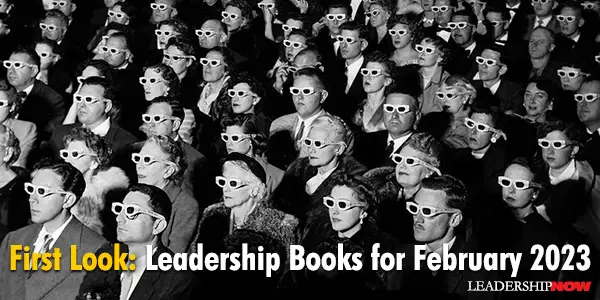
HERE'S A LOOK at some of the best leadership books to be released in February 2023 curated just for you. Be sure to check out the other great titles being offered this month.
Former NFL Pro, world-renowned keynote speaker, and management consultant Matt Mayberry delivers an incisive and hands-on blueprint to employee engagement and peak productivity. In the book, you'll explore how leaders, at every level, can build a workplace culture that drives organizational excellence and unleashes the full potential of every employee. You’ll also learn: how to build a culture where people can become the best version of themselves and transform organizational performance, five common roadblocks that prevent leaders from using culture to get the best from their people and how to overcome them, and how to implement your playbook for cultural excellence across your entire organization.
With over two decades’ experience both observing and interpreting how people channel disaster into opportunity in the most extreme circumstances and environments on Earth, Ben Ramalingam has a unique vantage point from which to identify the key principles that can enable anyone to use stress as an opportunity for change. In Upshift, Ramalingam distils this expertise into an insightful, powerful, and engaging book that will show you how to reframe your set responses to stress and pressure and instead use them to harness the potential they hold not just for improving your work, your relationships, and your mindset, but for transforming them.
“There just aren’t enough hours in the day to get everything done!” Sound familiar? Forget the old concepts of time management and the hustle culture of working until you burn out. You and your entire team can get more done, in far fewer hours, with the right blueprint. Come Up for Air is that blueprint. Through years of building a leading efficiency consulting business, Nick Sonnenberg has discovered the primary reason why so many teams are overwhelmed. It’s not because they don’t have enough time, managers expect too much of their employees, or there aren’t enough people. The problem is that everyone is drowning in unnecessary work and inefficiencies that prevent them from focusing on the work that drives results. In Come Up for Air, you’ll discover the CPR® Business Efficiency Framework, a proven system for leaders, managers, and teams to maximize their performance and reduce overwhelm by using the right tools in the right way, at the right time.
Executive fellow at Harvard Business School, Guest Shark on Shark Tank, and famed angel investor Matt Higgins reveals the counterintuitive formula for a life of perpetual growth that has been practiced for thousands of years by military leaders and serial entrepreneurs alike—forget the Plan B and burn the boats. From Sun Tzu to Julius Caesar, the ancient Israelites to Ukrainian President Volodymyr Zelensky, there’s a bold and highly effective tactic seen throughout history—when leaders want to motivate their troops for success, they destroy all opportunities for retreat, and go all-in on the mission. They burn their boats; it’s win or perish, and the clarity of sheer desperation propels them to victory.
The best leaders, in the biggest moments, know how to read the situation, respond in the most effective way possible, and move forward. You can, too. Leadership coaching legends David Noble and Carol Kauffman show you how with their innovative new framework—MOVE—which equips you with the tactics you need to slow down high-stakes situations before they speed you up. You'll learn to master the moment, generate response options, and quickly evaluate those options before acting. As you get better and better at using the framework, you'll find you can recognize these moments as they arrive, like a great athlete who can read the field as a play unfolds or a great conductor who anticipates what's needed to deliver a great performance..
Intrinsic motivation―doing a thing for its inherent satisfaction rather than external rewards―is the key to success and satisfaction in any endeavor. A legendary performance coach shares his simple, proven, and fun methods for cultivating and keeping it. As more of us work remotely and the frequency of our in-person contact decreases, this desire for connection and trust has only become more important; the social drive is so strong that our body temperature drops when we feel excluded. To satisfy our psychological needs in today’s professional world, we must pursue them consciously and purposefully―but unfortunately, most of us don't know how to do so effectively. Instead, we waste our time on ineffective coping strategies that often make us feel even worse. The true solution to becoming happier, healthier, and more productive is to become intrinsically motivated.
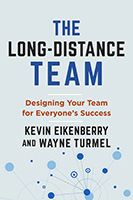  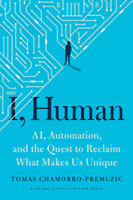 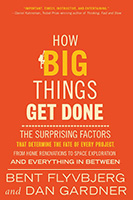
“A library is not a luxury but one of the necessities of life.” — Henry Ward Beecher
Posted by Michael McKinney at 06:53 AM
|
BUILD YOUR KNOWLEDGE


How to Do Your Start-Up Right STRAIGHT TALK FOR START-UPS 
Grow Your Leadership Skills NEW AND UPCOMING LEADERSHIP BOOKS 
Leadership Minute BITE-SIZE CONCEPTS YOU CAN CHEW ON 
Classic Leadership Books BOOKS TO READ BEFORE YOU LEAD |
|